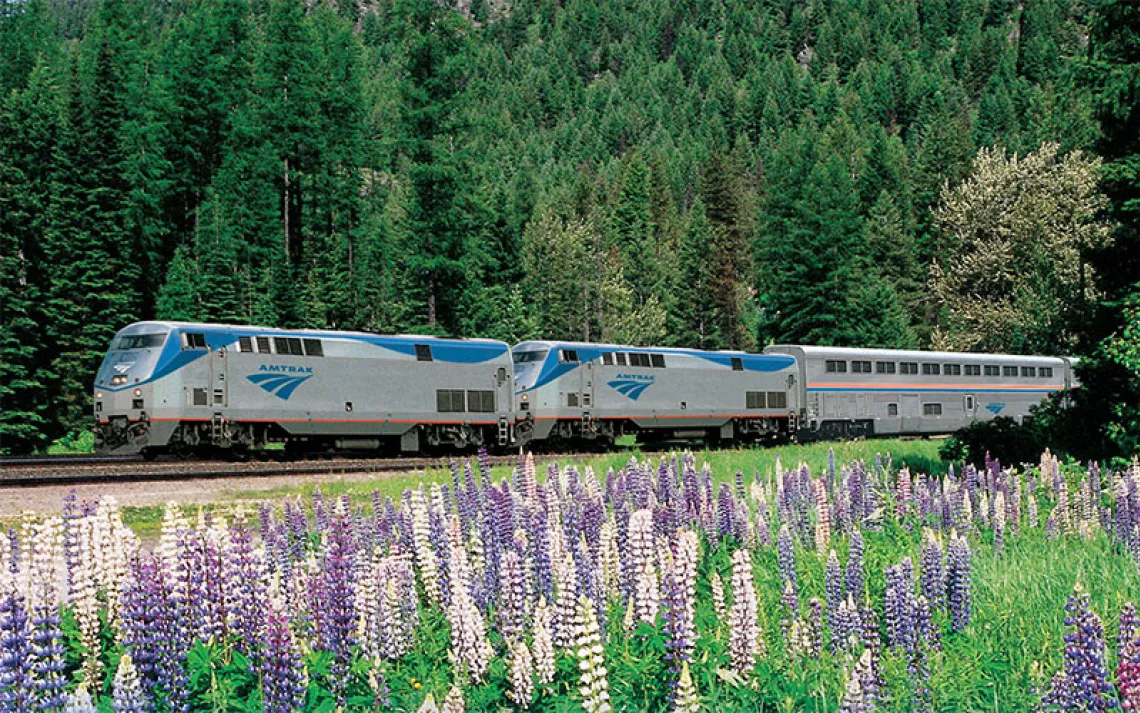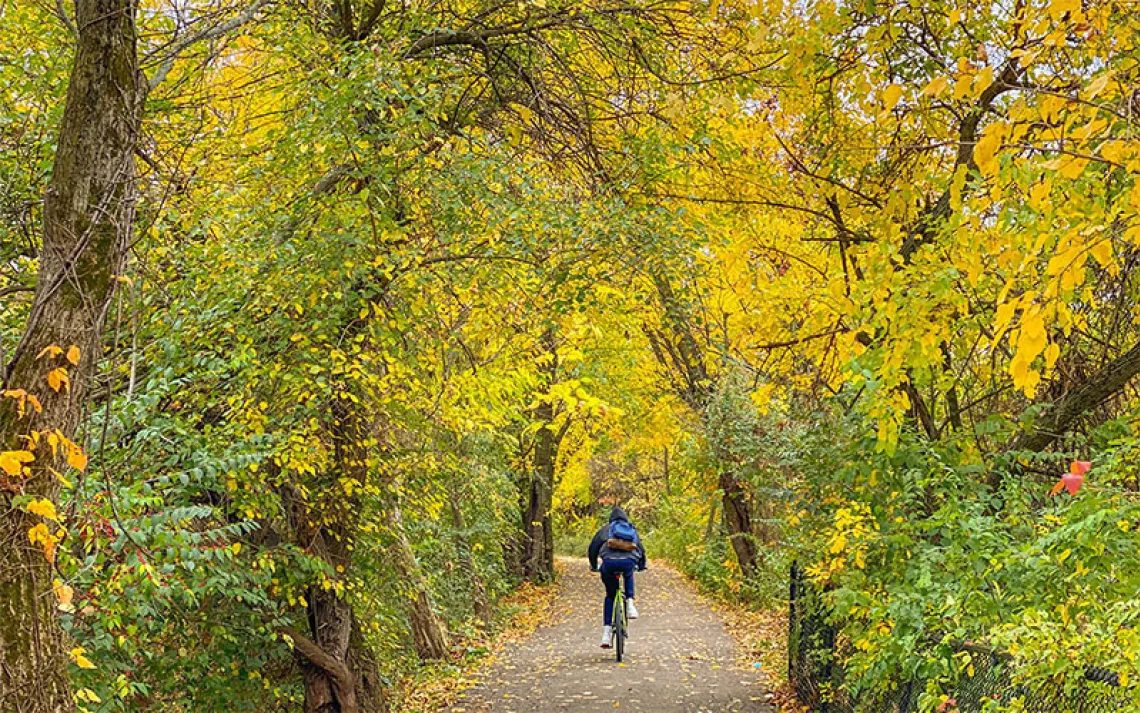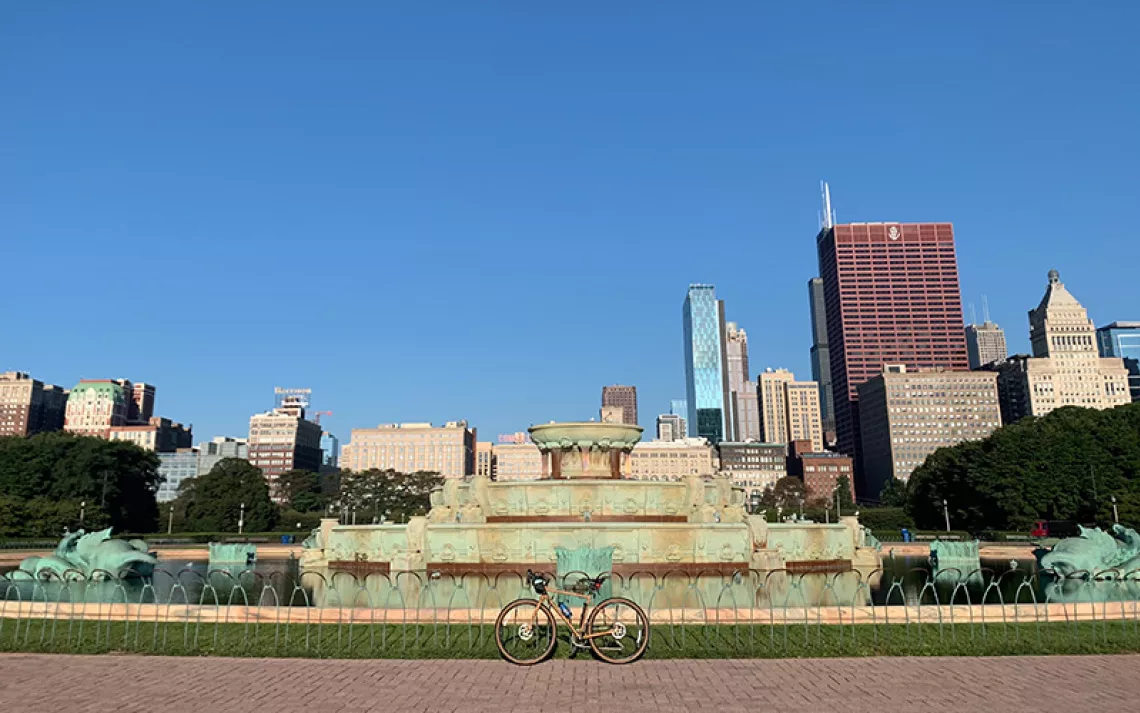The Oregon Coast's Slowest Cyclist
One writer's quest to take the long way home

Photos courtesy of Leonie Sherman
I set off to bike from the northwesternmost corner of Oregon to my home in Northern California to rehab a torn hamstring and a broken heart. I imagined damp difficult days of riding punctuated by melancholy nights. But instead I found a mellow joyride and a welcoming community. Riding 380 miles along the Oregon Coast didn’t just heal my heart; it renewed my faith in the power of moving my body through beautiful places to set everything right again—if not in the world, then at least within myself.
You don’t even need to buy a map to bike the Oregon Coast. The Oregon Department of Transportation provides free Coast Bicycle Route Maps—which account for mileage, elevation gain and loss, traffic volume, prevailing wind directions, and average monthly temperatures and rainfall—at visitor centers throughout the state. These maps even list scenic alternatives to the already scenic Highway 1 as well as every state park and hot shower cyclists will encounter along the way.

Highway 1 snakes along the Oregon Coast, passing through dripping old-growth forests and one of the largest dune systems in the country. Sea stacks thrashed by waves are shrouded in fog every morning, and white-sand beaches shimmer for miles in the bright afternoon sun. Rarely is the heaving ocean out of sight. The incessant roar of waves muffles traffic noise.
Of which there is plenty. Highway 1 is a National Scenic Byway through Oregon, and most visitors choose to drive it. The good news is that those drivers are unfailingly polite and view cyclists as something of celebrities. Only one car out of the thousands that passed me honked. Everyone else waited patiently for a safe opportunity to pass—along one twisty section, I had a line of five cars trailing behind me for half a mile before I could pull over. Each driver waved as they passed by. Every time I pulled over to rest or snack, drivers would approach to inquire about my trip and would often praise my courage.
My first evening, I rolled into the hike-and-bike campsite at Fort Stevens State Park and found a pretty meadow ringed by trees and set aside from the humming generators of the main campground. Half a dozen picnic tables were arranged around a central fire pit, and at the far end I saw a row of lockers, each containing solar-powered USB charging outlets. A bike pump and an array of tools were anchored to a concrete platform. Free unlimited hot showers beckoned less than 100 yards away.
I’ve been to hike-and-bike campsites in California, and with a few exceptions, they’re an afterthought, sandwiched between the restrooms and the fish-cleaning station, or in an open, sun-baked field. At the dozen hike-and-bike campsites I visited in Oregon state parks, however, the comfort and convenience of cycling campers clearly dictated design. Apparently, Oregon aims to reduce auto traffic along its famed scenic coast by seducing cyclists.

The plan seems to be working. I never found an empty site or a more interesting collection of people. I met a shady accountant from some tax-sheltered European island, a vacationing Montana teacher, a renewable -energy scientist who was cycling while between jobs. I chatted with a recent Harvard PhD graduate recovering from PTSD induced by her male-dominated work environment and a pair of Nevadans celebrating cancer recovery. One afternoon, I explored a historic park with a Southern Californian athlete who was coming to grips with a lost custody battle.
Still, each day amounted to a physical and emotional roller coaster that was mine to ride alone. The route dips and climbs over headlands and capes, along bays and sloughs. Though there’s 16,000 feet of elevation gain spread over the route’s 380 miles, the hills are never steep and the climbs are never long. My emotions followed suit. Sometimes, I burst into laughter or song as the beauty and tailwinds filled my heart. One time, I pulled off the road to weep uncontrollably for 20 minutes. Like the hills and ever-changing views, my feelings came and went and I kept pedaling, cultivating non-attachment and peace through the simple repetitive motion that propelled me forward. Every evening I arrived at camp to find others just like me, exorcising their own demons with exercise and eager for connection.
There are as many ways to bike the Oregon Coast as there are spectacular vistas to enjoy. A friend completed the journey in three days, pausing only to pass out for five hours at a time. I met a Brit subsisting on take-out pizza and a pair of old friends visiting every brewery along the way. A young man from San Diego was staying in motels and eating out for every meal on his 1,000-mile journey home from Vancouver. Every cyclist follows a similar route but has a different trip.
After three days of following notes I’d scribbled from a guidebook I’d borrowed from a fellow camper my first night in Fort Stevens, I realized that at my pace, I’d be in California in three days—and that I wanted to better savor my adventure. Plus, my right knee had started to creak like a rusty door hinge; biking 75 miles a day isn’t the best prescription for a recently torn hamstring. So I resolved to slow down.

Becoming the slowest cyclist on the coast forced humility and has since become a habit. Now when I cycle tour, I brake for berries. I browse galleries and libraries, stroll through botanical gardens and along deserted beaches, and visit cafes and museums. I can’t stop and enjoy the world enough.
Climbers and other athletes talk about Type 2 Fun—the sort of adventure that requires weeks of recovery. We pride ourselves on suffering and measure intensity by how much time needs to pass before we can entertain embarking on a similar endeavor. For me, biking the Oregon Coast was Type 0 Fun—after shower and doing my laundry, I felt ready to turn around and ride the whole thing all over again.
Follow in the Writer's Bike Tracks
Getting There: For an ecofriendly trip, take Amtrak to Portland. Reserve a spot for your bike to avoid the hassle of boxing it—Amtrak will securely store a limited number of bikes per trip. The southbound coastal biking trip starts in Astoria, the northernmost town in Oregon, which is more than 100 miles from Portland. To bike there from Oregon’s largest city, take the light rail to the end of the line at Hillsboro and ride on the Banks-Veronia State Trail before following the Nehalem River along State Route 202. (Traffic is fairly light.) Or, consider taking the Northwest Point bus, which offers twice-daily service from Portland’s Amtrak Station to Astoria. Again, be sure to reserve space for your bike. Brookings, Oregon, near the state’s southern border, has an Amtrak bus station as well as local public transit options. You’ll need to box your bike for the Amtrak bus; the mechanics at the nearby store Escape Hatch are happy to help.
When to Go: The climate along the coast of Oregon is moderate all year, with winter lows rarely dipping below 40 and summer highs rarely rising above 70. During January, 12 inches of rain can fall and storms can lash the coast, but July rarely sees more than an inch of rain. May through September provide the most pleasant temperatures and consistent tailwinds for a southbound cyclist. Summer also sees the most auto traffic.
Where to Stay: The coast of Oregon offers lodging for every budget and style, with motels, hotels, inns and B&Bs to be found in almost every hamlet along the way. These can fill up quickly during summer months; reservations are recommended. Some may be shuttered during the long, wet winters. Many of the state parks en route offer campsites reserved for hikers and bikers; no reservation is required and there’s always space.
Pro Tip: Wear a fluorescent vest for maximum visibility—a blinking rear light is also helpful. Consider walking your bike across the longer bridges. When the shoulder is too narrow to allow biking, move into the car lane so drivers understand they need to shift lanes to pass you. Most motorists will wait to pass until they can use the opposite lane; return the favor by remaining aware of the potential for a pile-up behind you, and pull over where possible to let polite drivers pass.
 The Magazine of The Sierra Club
The Magazine of The Sierra Club



